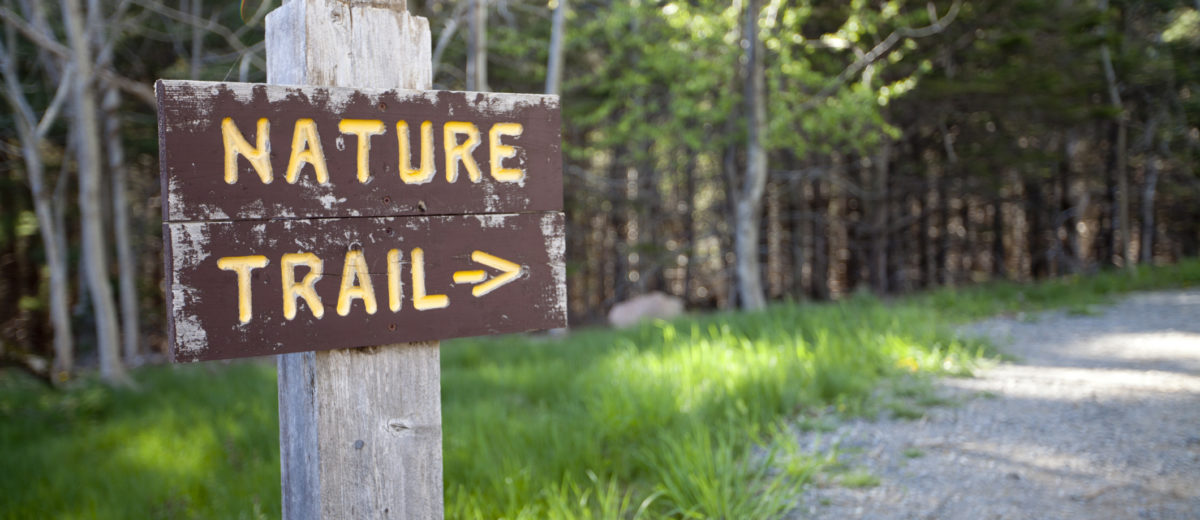By Libby Orcutt, Senior Field Tech
The conclusion of the 2018 season marked the end of the third year for the Downeast Phenology Trail (DPT). The Downeast Phenology Trail was created to help advance scientific research in Acadia National Park and throughout all of Downeast Maine while providing the opportunity to engage volunteer citizen scientists in the data collection process. Participation in citizen science projects helps scientists gain a greater understanding of the natural world, while volunteers increase personal knowledge on science and environmental issues. Whether one unfolds a protein or collects phenology observations, participation in citizen science fosters a deeper connection to one’s community and the environment that all can appreciate.
Phenology, or nature’s calendar, is the study of plant and animal life cycle events. It includes tracking the timing of flowering and fruiting plants, emergence of insects, and bird migrations.
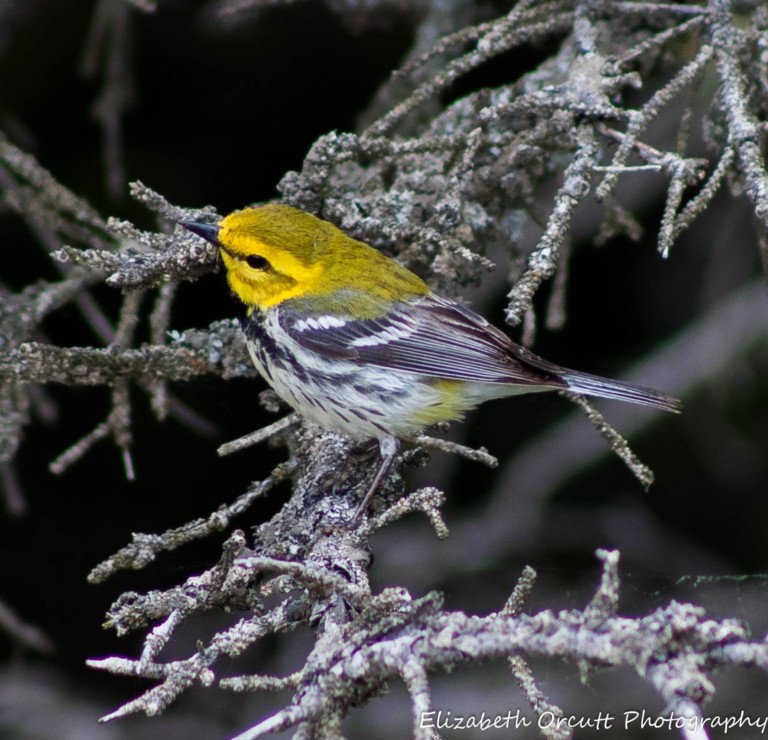
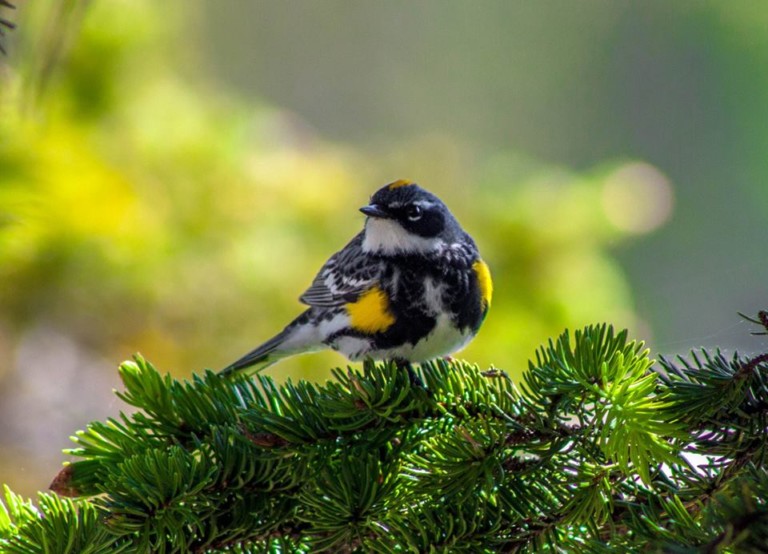
Millions of songbirds migrate north every spring and even more birds head south along our coastline in the fall. As they travel the long distances needed to reach their southern destinations they need stopovers where they can refuel on fruits and insects. As the climate changes temperatures are going up. As things heat up the timing of fruits ripening and insects emerging is happening earlier and earlier. But, birds are migrating south later and later. Will there be any fruits or insects left for the birds when they migrate through our region in the fall? Schoodic Institute has partnered up with the National Phenology Network, to use their Nature’s Notebook citizen science tool, along with Centro de investigación Científica de Yucatán, Acadia National Park, Blue Hill Heritage Trust, Downeast Lakes Land Trust, Fields Pond Audubon Center, Island Heritage Trust, Frenchman Bay Conservancy, Great Pond Mountain Conservation Trust, and Petit Manan National Wildlife Refuge to set up the Downeast Phenology Trail–to try and answer that research question and more.
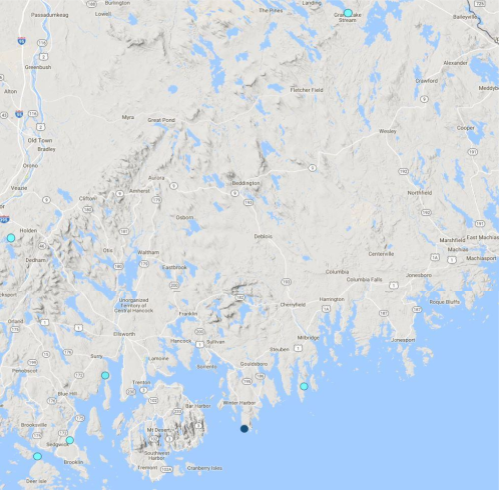
2018 was an outstanding year for the Downeast Phenology Trail. We held 8 app training sessions and 7 field training sessions that was attended by over 150 citizen science volunteers. We added two new partners and expanded the project from 7 trail locations to 13. At those 13 locations, 21,693 observations were made on 19 plant species using Nature’s Notebook. Since, the start of the project there have been 33,118 observations made by 294 observers. Every observation that is made helps researchers fill in data gaps. When an observation is made, using Nature’s Notebook, that data gets stored in their online database where they become available to researchers, land managers and anyone with a Nature’s Notebook account. It can take years of data to see how the timing of the phenophases change. The DPT is building a baseline of phenology data in the Downeast region of Maine. This collection of data will allow questions, like ours, to be answered.
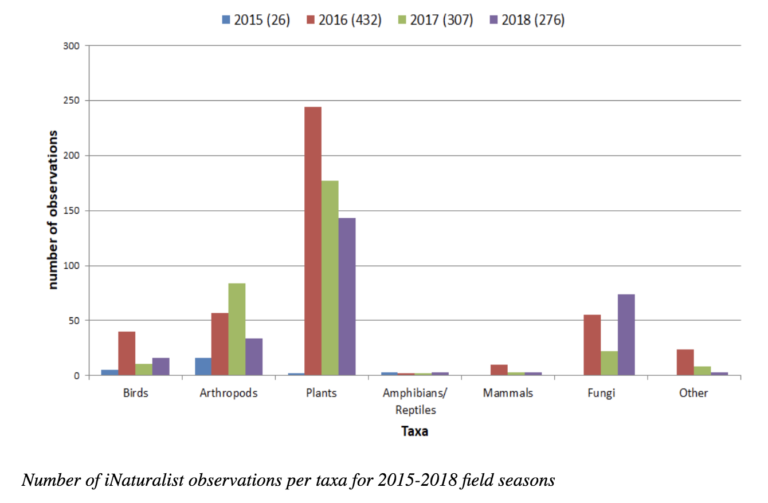
eBird and iNaturalist are two more apps that are used to collect data on the Downeast Phenology Trail. The first, eBird, is to survey what birds are present at each trail and when they are present. The second, iNaturalist, is used to record what and when other organisms are seen on the trails with a focus on arthropods. So far there have been 146 observers that have made 1,030 observations on 309 different species in our Downeast Phenology Trail iNaturalist project, https://www.inaturalist.org/projects/downeast-phenology-trail.
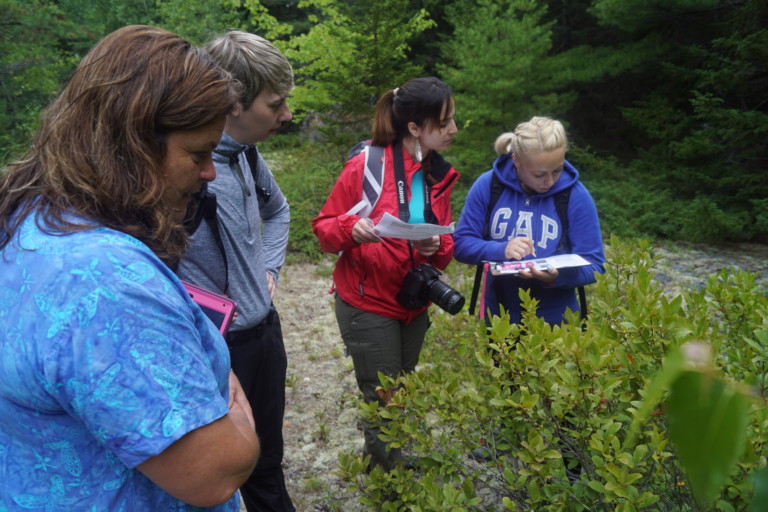
During DPT fieldwork as Senior Field Tech, I regularly heard comments like these from our volunteers; “It was an eye opening experience to see how the research contributes to the bigger picture of things but also helped educate me on many gaps that I have when it came to nature and how we are harming it.” And, “The training helped me to develop a more environmentally aware mindset as it provided a great platform for dialogue on climate change and addressing environmental issues.”
How can you help? Find one of our trails near you and become a volunteer. Use just one of the apps or all three; the choice is up to you. You can record phenology data using Nature’s Notebook. You can submit birding checklists using eBird. You can capture biodiversity using iNaturalist. Have questions contact Elizabeth Orcutt at eorcutt@schoodicinstitiute.org.
The DTP partners send a heartfelt thanks to all the volunteers that helped with our project.
